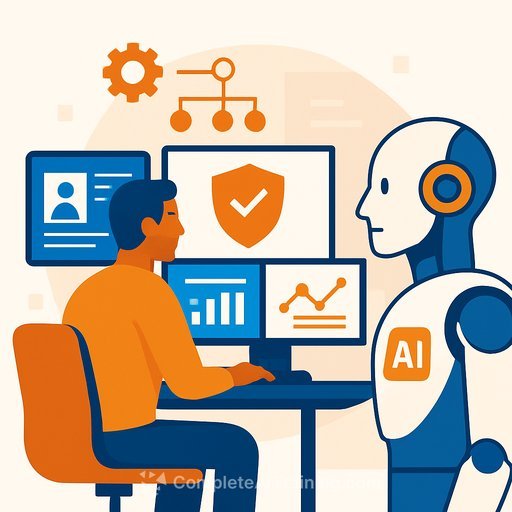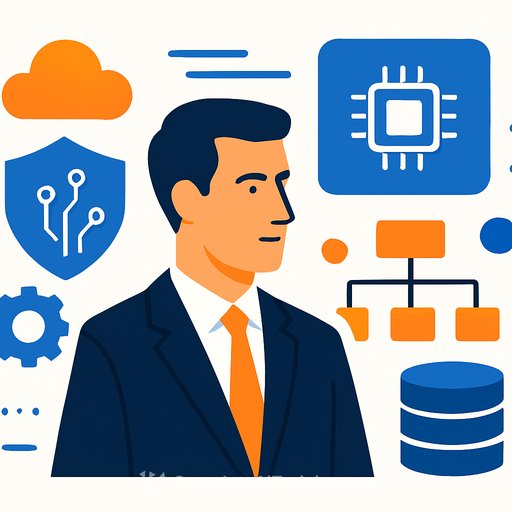AI isn't replacing your SOC team - it's supercharging them
Your SOC is outpaced by volume, speed and automation. Alerts pile up, context is fragmented and the threat that matters is the one you miss. Traditional automation helps, but it can't keep up with scale and nuance. An AI-native SOC shifts you from reactive cleanup to proactive defense without sidelining your analysts.
Think of AI as a force multiplier: generative AI clears the grunt work and agentic AI acts with the right level of autonomy. Your team keeps control. The outcomes: fewer false positives, faster decisions and more time for high-impact analysis.
What genAI actually does in the SOC
- Automates the mundane: Summarizes alerts, compiles incident reports and builds threat actor briefs by parsing logs, SIEM, EDR and intel feeds. Less "swivel-chair" fatigue, more focus.
- Improves triage: Synthesizes signals across tools into a single, actionable view. Cuts noise and shortens the path from alert to decision.
- Spreads expertise: Junior analysts query knowledge bases in plain language and operate closer to senior speed. The whole team levels up.
For more context on genAI's role in cybersecurity, see this overview from Palo Alto Networks.
From suggestions to action: agentic AI across a spectrum
- Level 1 - Recommend: The agent proposes a next step (e.g., isolate a host) and a human approves.
- Level 2 - Auto-act (low risk): Pre-approved, bounded tasks run without human clicks (e.g., block known malicious IPs).
- Level 3 - Full autonomy (time-critical): Detect, investigate and contain in one flow when seconds matter and the blast radius could be severe.
This tiered model enables a multi-agent setup: one agent detects, another analyzes malware, a third contains - all coordinated, with humans validating edge cases. For a practical view on multi-agent SecOps, see Torq's perspective on multi-agent AI.
Agentic AI also turns threat hunting into a continuous function. Agents look for subtle indicators and anomalous patterns between alerts, not after them. That's how you move from "responding" to "pre-empting."
The operations playbook for an AI-native SOC
Start where the impact is obvious
- List high-volume, low-risk tasks (enrichment, IP blocking, user lockouts, sandbox detonation, ticket updates). Map each to Level 1, 2 or 3 autonomy.
- Convert your top 10 runbooks into AI-ready workflows first. Add a visible kill switch and clear rollback for each action.
- Define approval rules by risk: who signs off, under what conditions, within what time budget.
Build a clean data backbone
- Normalize and tag data across SIEM, EDR, identity, email and network. Bad data equals bad decisions.
- Apply strict access controls, PII masking and immutable audit logs for every agent action and prompt.
- Isolate AI workloads and restrict egress to vetted destinations only.
Redesign workflows, not just tools
- Shift human effort from doing to supervising: exception handling, model feedback, and validation.
- Embed guardrails: action limits, timeouts, peer review on sensitive assets and step-up approvals during incidents.
- Document failure modes and define safe fallbacks for each playbook.
Prove safety and efficacy before scale
- Run agents in a sandbox with synthetic threats and canary tokens. Add prompt-injection tests and model "jailbreak" checks.
- Tabletop with IR, legal, HR and comms. Treat the agent as a teammate with clear responsibilities and boundaries.
- Shadow mode, then partial production, then full rollout. Promote based on performance gates, not dates.
Measure what matters
- MTTD, MTTR, alert closure rate, false positive rate, analyst time per incident and containment time for privilege misuse.
- Coverage: percent of alerts auto-triaged, percent of incidents with an auto-remediation option and runbook conversion progress.
- Quality: post-incident review outcomes, re-open rates and precision/recall on detection improvements triggered by AI findings.
People and skills
- Upskill analysts on prompt craft, model limits, bias, and how to supervise autonomous flows.
- Make "AI operator" a formal role on shift. Reward analysts for tuning agents and improving playbooks.
- If you need structured learning paths, see AI courses by job function.
Governance and "compliance by design"
- Document model sources, training data lineage and update cadence. Keep model cards and change logs.
- Set clear data retention, redaction and export rules for AI outputs and prompts.
- Define accountability: who approves autonomy level changes, who audits actions and how overrides are recorded.
Cost and ROI
- Track license and compute costs against reduced overtime, fewer escalations and faster containment.
- Quantify reclaimed analyst hours and redeploy to threat hunting and purple-team work.
- Prioritize use cases with measurable payback inside 90 days.
A phased autonomy roadmap
- Phase 0 - Assist: GenAI summaries, report drafts and knowledge queries. No actions.
- Phase 1 - Recommend: Agent proposes steps with evidence. Human approves.
- Phase 2 - Auto-act (bounded): Pre-approved actions on low-risk assets with full logging.
- Phase 3 - Time-critical autonomy: High-confidence containments under strict policy and instant notification.
Secure the AI itself
- Least-privilege credentials, short-lived tokens and secret vaulting.
- Workload isolation, strong egress controls and dependency allowlists.
- Prompt sanitization, content validation, output signing and anomaly detection on agent behavior.
- Rate limits, backoff strategies and throttles to prevent cascade failures.
Vendor questions that cut through the hype
- Which actions can your agent perform without human approval, and how do I change those boundaries?
- Show me the audit trail for every prompt, decision and action. How is it tamper-evident?
- How do you prevent prompt injection and tool mis-binding? What red-teaming was done and how often?
- What's the rollback path if an action misfires? Is there a universal kill switch?
- How are models updated, and how do you prevent behavior drift between versions?
- What's your data handling policy for customer logs and prompts? Can we bring our own model?
The mandate for SOC and operations leaders
This is not man versus machine. It's your team plus a smart, tireless assistant that never sleeps and acts within guardrails you control. The result: fewer missed threats, faster containment and analysts who spend time on strategy, not swivel-chair work.
Invest in integration and workflow redesign, not just licenses. Train your people to supervise and validate AI. Build the safety rails from day one. Do this well and you'll shift from reactive defense to durable resilience - and win back the minutes that attacks try to steal.
Your membership also unlocks:






